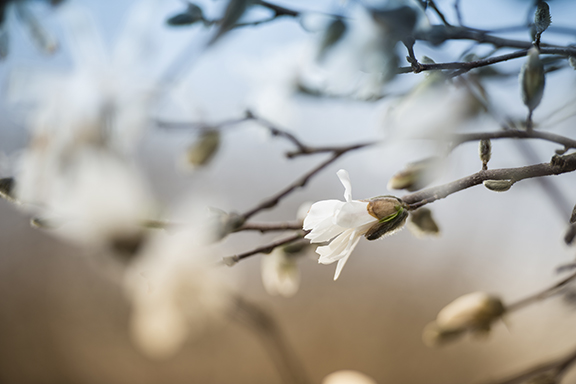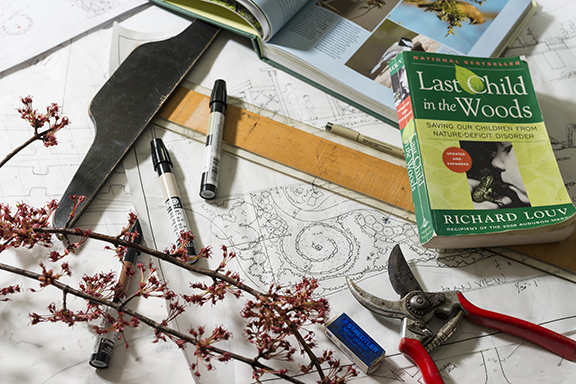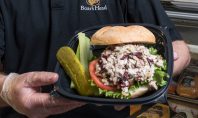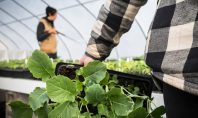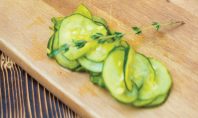Parkland Nurseries
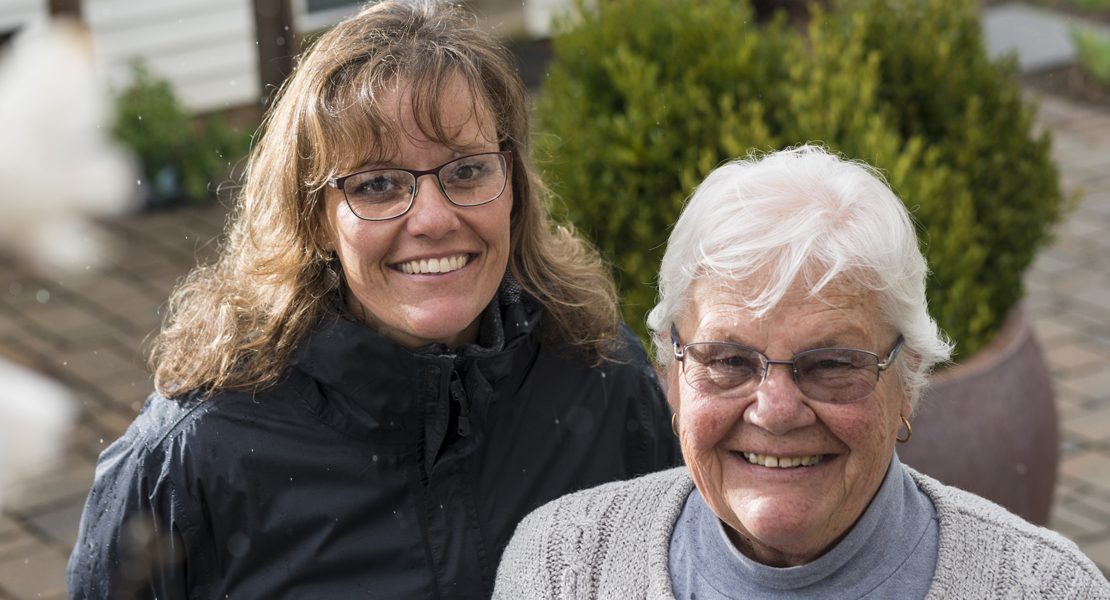
Since its founding in 1953, Parkland Nurseries has naturally grown and evolved—much like the sustainable landscapes its employees design and build.
Agronomist William Ziogas and his wife Birute, who moved from Lithuania to the Lehigh Valley shortly after World War II, started the nursery in Allentown. Six years later, in 1959, they moved to its current six-acre site in Orefield. There, William grew many of the ornamental evergreens he used for his landscaping projects and Birute handled retail sales.
But as the industry changed, so did the nursery’s focus. When their daughter—landscape architect Jurate Hayes—took the helm, the evergreens gave way to deciduous trees and the focus of the business shifted from growing and retail to landscape design and construction. That trend continued when Jurate’s daughter—Stacey Nash, also a landscape architect—joined the family business and incorporated her interest in native plants and sustainability.
“We always try to do right by the client and the environment.”
“As a child, I was always interested in the outdoors,” says Stacey. “Mom would take us to botanical gardens and public gardens, and we would go on hikes in the mountains.” But her education at Temple University sealed the deal, she says, by stressing the importance of connecting to the environment through the plants you choose and the way you design.
Today, Parkland Nurseries specializes in ecologically friendly, sustainable garden design, construction, and maintenance, including walkways, patios, walls, water features, and low-voltage lighting.
Sustainability is a Top Priority
“Sustainability is a concept of producing something that can evolve and exist over time without massive pains to keep it in a certain state,” says Stacey. “It means planting species or creating spaces that don’t require huge amounts of chemicals and fertilizers, using plants that are native to this environment, allowing plants to grow the way they are supposed to, without extra effort, and allowing the yard to evolve.”
She admits, taking those ecological principles and bringing them to the home owner is a tall task at times. “We always try to do right by the client and the environment,” says Stacey. “That may mean explaining why we won’t select a particular plant species. Sometimes it costs us a job, but sometimes they really listen and understand, and we gain a longtime client and friend.”
And it’s that strong commitment to their mission that’s partly responsible for Parkland’s success. “People are more inclined to listen when you have a specific reason for doing something,” says Jurate. “Maybe you’re advising them why not to fertilize constantly. Or that just because you see a bug doesn’t mean you need to use 20 insecticides.”
The Parkland staff—which also includes Stacey’s husband Timothy Nash, a landscape architect and certified pesticide applicator—uses integrated pest management practices. They focus on observing and identifying the pest, identifying the level of damage, deciding if and when to treat, and choosing whether to treat chemically or organically. “It is often largely a monitoring process,” says Stacey. “We only treat problems.”
Personalized Lawn and Garden Design
While the Parkland staff clearly has the environment in mind in everything they do, the landscape architects also take their clients’ property and preferences into account when designing outdoor spaces. The shape of the property, whether it’s shady or sunny, whether it’s wet or dry, and what the owner wants to use the land for are all crucial to the design. So are the owner’s tastes, interests, and time constraints.
“If you say ‘gardening’ to the clients and they run, you know you shouldn’t be designing something that will have them going out and working in the yard every day,” says Jurate. Instead, the Parkland team might plan something that would be easier to deal with such as a large grouping of plants, rather than an intricate border.
The staff also takes care to select plant varieties that appeal to the homeowner’s aesthetic. If they want something showy, there are plenty of native plants available to fit the bill.
“Designing and building sustainable landscaping is our bottom line.”
“A lot of the industry-standard shrubs are native to this area, and people don’t know that,” Stacey says, mentioning inkberry holly, winterberry holly, hypericum, and viburnum. Native trees include many oaks and maples, dogwood, fringe trees, redbuds, some magnolias, white pine, Douglas fir, hemlock, and American arbor vitae. Likewise, some of the most popular garden perennials are native, including black-eyed Susan, purple coneflower, and coreopsis.
“There are showier plants that some homeowners fancy because they’re pretty. Others, who are a little more environmentally conscious, prefer the straight species that are bred to help wildlife, or for shade, or sun or wet areas or dry areas. There are an endless amount of them.”
Parkland Nurseries grows some of the native perennials it uses in its landscaping projects but purchases most from local growers. Same goes for some of the shrubs and trees. But these days, Jurate says, “designing and building sustainable landscaping is our bottom line.”
Make Your Own Yard More Sustainable
So you want to make your landscape more sustainable? Start by considering how you’ll be using your yard. “If the only purpose your lawn offers is recreation, consider that and think about planting in the bordering areas,” says Stacey. “Also, in your planting areas, increase your diversity by planting different species for the different seasons.”
Next, consider the way plants are intended to grow—shade vs sun, with other plants vs alone. “Proper placement is important,” says Stacey. “It reduces excessive pruning and allows plants to grow in ways you may not have seen.” Allowing certain plants to grow together and understanding their life cycles means less work for you and a more natural spaces for your yard’s other inhabitants.
“Dried leaves and hollow stems provide a more natural environment for everything that uses the space,” she says, adding that plants can be sources of food and cover for wildlife. “There are entities that need this type of environment to live,” she says. “Allow things to keep their course.”
You should also think about what lies beneath. “There are lots of things we don’t see in the soil,” Stacey says. “Be aware of the fact that you’re living with other organisms, and while something may not suit your fancy, maybe it suits something else’s. You may be using a chemical to save a plant, but the chemical taken up by the plant lives on longer than you can see.”
Grow These!
The following plants, recommended by Stacey, are native to the Lehigh Valley and will make a gorgeous addition to your yard or garden.
Native Shrubs
Inkberry holly
Winterberry holly
Hypericum
Viburnum
Native Perennial Flowers
Black-eyed Susan
Purple coneflower
Coreopsis
Native Trees
Many oaks and maples
Dogwood
Fringe trees
Redbuds
Some magnolias
White pine
Douglas fir
Hemlock
American arborvitae

